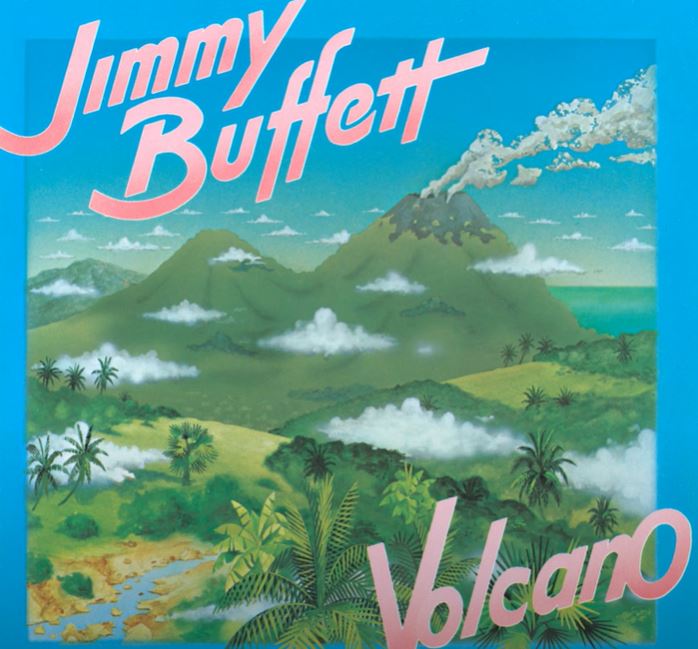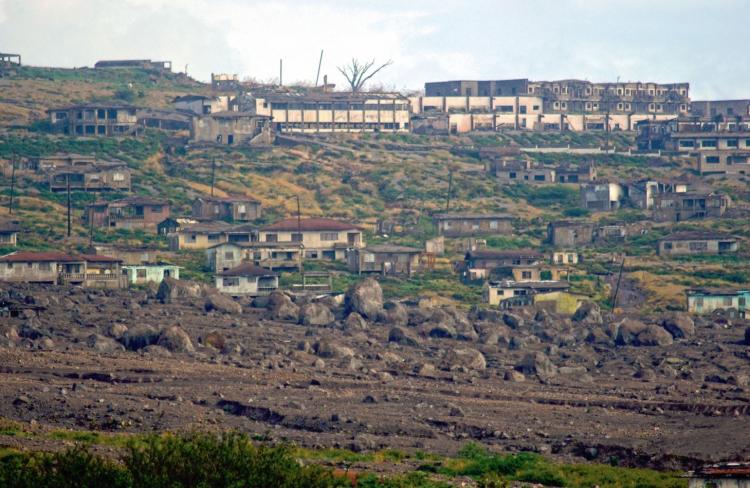Cruising Sailors Visit Montserrat, Where Jimmy Buffett's Volcano Blows
You never know where a quest may lead you. Case in point: as part of our “down island” wanderings this past February, we sailed with our friends from Annapolis, Richard Ewing and Idarae Prothero, to Montserrat. Alas, the good ships Hurrah and Molto Bene arrived without Montserrat courtesy flags. So after clearing in, we set off in search of some.

You’ve probably heard of Montserrat, as in Jimmy Buffett’s classic song written on the island, “Where you gonna go when the volcano blows?” Well, the Soufrière Hills volcano blew in 1995 after a 400-year slumber and has been spewing ash, volcanic gasses, and other unpleasant debris down on the island ever since. The eruptions buried the former capital city Plymouth along with many villages and have left an exclusion zone sometimes open to people during the day. More than half the islanders left in the aftermath.
Now about 5000 hardy Montserratians remain, and what an amazing story some of them have to tell. We came to Montserrat specifically to see the volcano. We knew we couldn’t stay long since ash had filled in the only comfortable anchorage years ago, and our nights hanging on the edge of the coast would be rolly at best. So we took the dinghy to shore early, hoping to find a flag, look around the island, and take a tour of the island’s exclusion zone in the afternoon.
Our quest for a flag brought us into several stores and several interesting conversations with locals. Every person we met was friendly and out-of-their-way helpful, but also tough, resilient, optimistic, and hard working. Not only did they tell us about their beautiful island and their plans for the future, they also asked us where we were from and how we got there. And they really listened. Only one person tried to get us into a taxi. While looking for a flag, we learned from the host at the visitor’s center about the island’s ambitious plans for a new capital city at Little Bay that includes a marina.
The owner of the hardware store talked about efforts to woo investors to the island with “green” businesses and to create real jobs that could bring people back to the island. He told us about a geothermal plant that is already starting to power the island and reduce its dependence on imported fossil fuels. And he scored on the flag, finding a store that carried them.
That afternoon, we took a tour of the island with Joe Phillip, aka “Avalon.” First stop was Karishma, a store with a little bit of everything, including Montserrat flags with silkscreening so poor that it was pulling off the fabric. The owner was a little embarrassed. “But what can I do?” he suggested wryly. “Send them back to China?” We bought two for the price of one anyway. Then we started our tour to the exclusion zone, where the aftermath of the volcanic eruptions can be seen.
The Soufrière Hills volcano tends to spew ash, which settles everywhere, including at the top of the volcano. Rainwater brings it all downhill with mudflows that bury whatever is in their path. Throw in the occasional pyroclastic flow of hot rocks and ash, and there’s a lot of new land being created, much of it on top of old villages and in the old anchorage. As a result, Montserratians had to abandon many of their towns and resettle on the more arid part of the island outside of the volcano’s path. The old villages were left as is, slowly being swallowed by ash.
Even more extraordinary, the ash is so fertile that the jungle has taken over quickly. Trees grow on roofs, in former living rooms, on front porches—consuming the entire village. Making the contrast starker, Avalon showed us his pictures of what these places, including his village, had looked like before they were buried. “Wow” kept escaping our lips.
So we asked Avalon what it’s like to lose your home and village. “It’s just a comma,” he said, “Not a period at the end of a sentence. This is not the end of our story.”
Everywhere we looked, it seemed he was right. A few sand milling operations work in the exclusion zone, turning Mother’s Nature’s gift into Montserrat’s top export. Most buildings are freshly stuccoed and painted. Construction is taking place all over Little Bay. Avalon told us of his own plans to order a bigger van so that he could give larger tours. And everyone we met seemed to love their island.
“Why would I want to leave?” Avalon asked us.
Down at the dinghy dock, we met a couple who ran a bed and breakfast. While the husband cleaned fish, Greg commented to his wife that they were lucky to live on Montserrat. She replied, “Luck had nothing to do with it. It was determination.”
Even though I wasn’t sure what to expect before we visited Montserrat, what I found was deeply impressive. Mother Nature is so good at wiping out human pretentions, but not, apparently, tenaciousness, determination, optimism, and an incredible work ethic. So now I know where I’m gonna go when the volcano blows: back to Montserrat. ~by Tracy Leonard
Update: rebuilding was delayed by hurricanes Irma and Maria in 2017 and later the Covid pandemic. Construction began in spring of 2024, 10 years after this article appeared in SpinSheet. Learn more here.
Find more cruising stories here.
Originally posted in 2014, this post was updated in July 2024.





